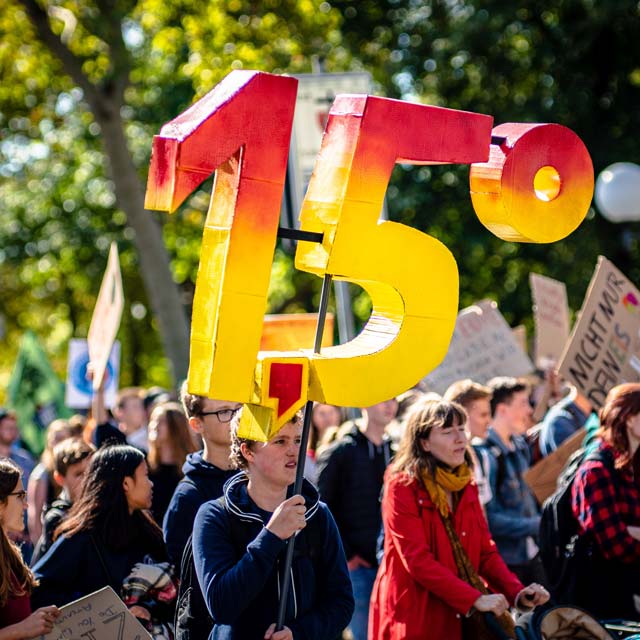
Two weeks of intense international negotiations have resulted in the Glasgow Climate Pact. The agreement sets out a blueprint for public and private sector actors to follow over the coming decade.
However, the Pact is not legally binding, there is no clear mechanism to enforce it, and there are already indications that some countries may default on certain commitments.
In this context, it is clear that the private sector will need to play a central role in the transition. Indeed, one of the main themes coming from COP, including from the UK Government, is a growing expectation on the private sector to take action.
Mark Carney’s alliance of large financial institutions, the Glasgow Financial Alliance for Net Zero (GFANZ), said that private, not public finance will cover more than two-thirds of the cost of the green transition. The Breakthrough Agenda for clean technologies signals a boost to R&D, innovation, and public/private collaboration, and we saw ‘bottom-up’ action led by businesses, the investment community, and third sector organisations. As KPMG put it “net zero is the next industrial revolution. And like other revolutions, those businesses who seize the opportunity can expect to thrive — those that don’t, may not.”
So, what do those changing expectations mean for business?
1. Reporting expectations are changing, and capital is seeking green investments
Finance was a dominant theme running through both the formal negotiations and announcements made around the edges of COP. We saw several statements that emphasised the increasingly influential role of the investment community in delivering climate action – namely through financing, capital mobilisation, driving technological innovation, and supporting improved data collection and reporting.
Key announcements include the launch of the International Sustainability Standards Board, a new body which aims to standardise climate risk disclosure and weed out corporate “greenwashing”, and a renewed financial commitment from members of Mark Carney’s GFANZ. While the true impact of these initiatives will become clearer in time, they provide a signal for where capital will be allocated in future and represent a strengthening of the trend for green investing.
2. A bright future for clean innovation presents opportunity for first movers
The UK presidency’s “Breakthrough Agenda” on clean technologies is significant and is a good example of where policymakers are looking to the private sector to drive progress. Launched during week one, the statement sets out a commitment to accelerate the development and deployment of clean technologies – signalling a significant focus on R&D and innovation to scale up sustainable solutions to the climate crisis.
As part of this, we saw the launch of the First Movers Coalition: a US-led coalition of 29 leading global companies including Amazon and Boeing, making purchasing commitments to help commercialise emerging clean technologies across hard-to-abate sectors such as aviation, steel, and aluminium. The ambition is to create a rapidly-scaling market for various clean technologies, with each founding member making a commitment in at least one sector.
This initiative demonstrates a growing awareness within the private sector of the opportunity and inevitability presented by green growth. As policymakers become more alive to this opportunity, we will see increasing private/public sector collaboration and ‘blended finance’ in this area, with governments investing public money into something novel to spur further investment in that area from private capital.
3. Certainty around carbon markets has created new reputational risks
Navigating multiple political disagreements, negotiators eventually reached an agreement on Article 6 of the Paris Agreement – the rule book for global trading in carbon offsets. All parties were forced to make compromises, with the end result stronger than many expected. Negotiations introduced an UN-supervised system open to the public and private sectors, and rules for companies trading emissions through bilateral deals.
The upshot is that carbon markets have evolved, with the effect of creating reputational risks for companies seen as using ‘bad credits’. The COP agreement paves the way to a more stringent system of regulation, meaning a growing expectation on companies to use these new market structures in the right way – reducing their emissions as far as possible, and buying high quality credits for what they cannot eliminate. This is in line with the Science Based Targets Initiative’s view of how offsets should be used.
The pledges on deforestation made during COP are also relevant here. Funds from carbon markets are critical for forestation projects and, prior to COP, buyers held the power and were setting the price at low levels. Following the Article 6 agreement, demand for credits is expected to soar, but there is not yet enough supply in terms of projects that can generate credits. This means we are likely to see the balance shift to the project owners to set the price, with quality credits getting more expensive as a result.
We are already seeing the impact of the agreement bear out in the markets. On 16 November, European carbon prices jumped to an all-time high above €66 a tonne as traders bet that the price of carbon will need to rise to support decarbonisation efforts by businesses and governments alike.
So, while Glasgow may not have produced the great political breakthrough some were hoping for, it has sent important signals that will guide and incentivise private sector action over the coming decade. Taken together, the Pact and initiatives announced on the edges of the summit, send a clear message to business: step up or risk being left behind.
